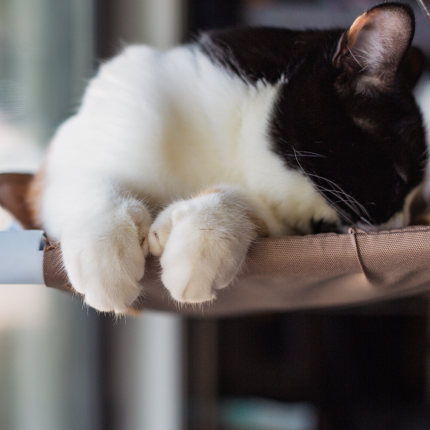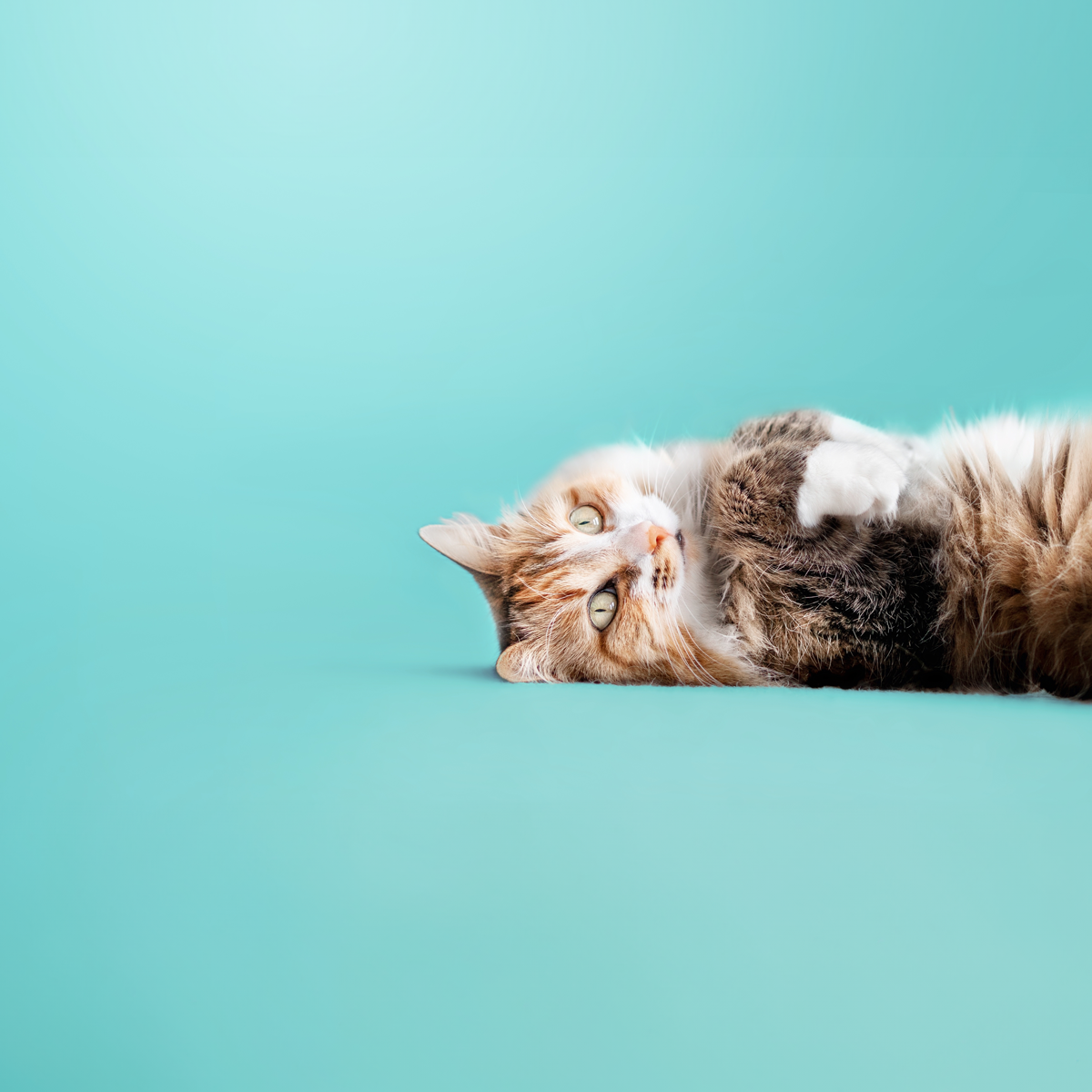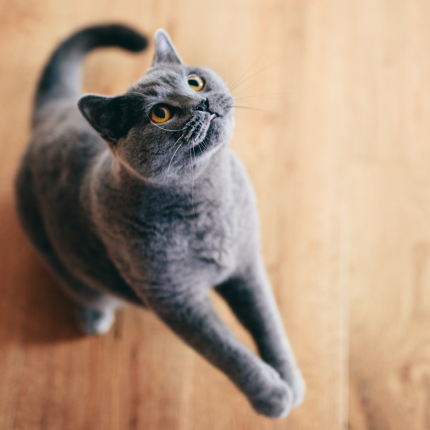Why Do Cats Roll Over Into Their Backs But Not Let You Touch Their Bellies?
It’s common knowledge dogs love to have their tummies rubbed when they freely lay down before you and roll onto their backs. But, if you’re also familiar with cats, you know that when they roll onto their backs with their bellies exposed, rubbing the belly will most likely result in bleeding. So why do they do this? advertisement An expression of trust Cat behaviorists will likely answer that it’s a sign of trust when cats roll over and expose their bellies. That is true, indeed. But is it also a request to rub their bellies? The fact that your cat
Latest Articles
Free Cat Social Media Vector Icons
Here at SparkleKitty, we want your digital project to have the opportunity to have some feline flair so we crafted up these social media illustrations free to use! Just do us a favor and give us a shoutout on social media or maybe tell a friend about your friends at SparkleKitty.com! Happy designing! advertisement
Why Do Cats Knead?
Kneading soft objects like blankets and toys is just one of the things you can find in the book of “strange things cats do.” Also known as “making biscuits,” kneading is a pretty common activity among felines, although not all cats do it. If you’ve noticed your cat rhythmically pushing his paws in and out against blankets, pillows, or even your lap, then your cat is definitely a “kneader.” You may not have given this a single thought until now but, is it okay for cats to knead? advertisement Is It Normal for Cats to Knead? This forward and backward shifting motion among cats, most commonly referred to as “kneading,” is a normal activity among kittens and adult felines alike. Most cats knead and purr when they feel content napping beside you or getting petted, while other cats do it for no clear reason at all. Experts say that there is nothing to worry about if your furry friend exhibits kneading behavior. Kneading with claws out, however, may indicate discomfort due to untrimmed nails or an unsatisfied urge to hunt. Make sure to keep your cat active and groomed to get rid of any irritation he might be feeling, which may have caused his frequent claws-out kneading. Why Your Cat Kneads Kneading is an instinctive trait among cats which means it is completely normal for them to do so as it is wired in their very nature. But if you want to get to know your cats more, you can start by understanding the reasons behind why they knead. Here are the popular theories from experts: They are just stretching out their muscles. Like humans, cats can feel sore from napping or playing too much; hence, they knead to stretch out their paws and keep limber. They are marking what is theirs. Felines safeguard their turf by leaving their scent, and they do this by activating the scent glands on their paws and mark surfaces, including you, by kneading on it. advertisement They are developing a resting spot. Like dogs turning in circles before lying down to sleep, cats knead cushions and beds to create a soft sleeping place. They are attracting possible mates. Female cats may knead, purr, and stretch to signal male cats that they may approach for potential mating. While these theories provide some enlightenment as to why cats knead, they certainly can’t deliver all possible reasons behind this adorable behavior among cats. After all, cats are notorious as mysterious creatures. Still, no matter what the reason behind their kneading is, you can rest easy knowing that it is a natural, instinctual, and common cat behavior—no need to worry.
Top Tricks to Keep Your Cat Off Your Countertops
Cats on counters can be frustrating, especially if all they do is track litter on countertops or push things off for their own enjoyment. Fortunately, there are effective strategies to deter your feline friend without causing stress. 1. Make Counters Unappealing Cats are sensitive to textures and surfaces. If your countertop feels uncomfortable or slippery, your cat may think twice before jumping up. Consider using materials or deterrents such as: Aluminum foil or double-sided tape: Cats dislike the texture and sound of foil or sticky tape on surfaces. Place strips temporarily on areas they frequently explore. Plastic carpet runners (nubby side up): The raised bumps are uncomfortable for paws but safe for your cat. Citrus scents: Cats tend to avoid citrus. Spritz a little diluted orange or lemon scent on the counter edges. 2. Offer Alternatives Instead of just saying “no,” give your cat a more appealing option nearby: Cat trees or shelves: Place these close to countertops so your cat can perch, observe, and climb safely. Vertical space is essential for their mental and physical stimulation. Window perches: Cats love looking outside, so giving them an elevated view can redirect their climbing instincts. Interactive toys: Puzzle feeders or treat dispensers can keep your cat engaged on the floor or other safe surfaces. 3. Train with Positive Reinforcement Cats respond better to rewards than punishment. Consistently reward your cat for staying off the counter: Clap or say “no” when you catch them on the counter, but never yell or hit. Redirect them to an acceptable spot, then offer treats, petting, or play. Consistency is key. Every time they jump on the counter without consequence, the behavior is reinforced. 4. Use Motion or Sound Deterrents Sometimes, a harmless surprise can help your cat associate the counter with an unpleasant sensation: Motion-activated air sprays: A short puff of air discourages your cat from jumping up. Motion-activated alarms or mats: Gentle, harmless sounds can deter counter exploration. Water sprays: Only as a last resort, light sprays from a squirt bottle may startle some cats, but this method can cause stress or fear if overused. 5. Remove Attractions Cats are drawn to counters for a reason. Keep them free of tempting items: Don’t leave food or dirty dishes unattended. Store fruit, treats, and snacks in closed cabinets. Keep pet bowls, plants, or anything that might smell appealing off the countertop. 6. Create a Routine and Enrichment A bored cat is a counter-climbing cat. Provide sufficient mental and physical stimulation: Regular play sessions (at least twice a day) with feather wands, laser pointers, or interactive toys. Provide scratching posts, climbing towers, and cozy spots for resting. Puzzle feeders or treat-dispensing toys can keep your cat occupied for longer periods. Keeping your cat off the countertops requires patience, consistency, and a combination of deterrents and enrichment. Remember, cats are intelligent, and with positive reinforcement, they’ll learn where they’re welcome, and where they’re not.
Top 10 Most Expensive Cat Breeds
Next to dogs, domestic cats are the pet lovers’ favorite. Some cat lovers would be willing to splurge a fortune just to get the pet cat of their dreams. Yes, some of the most expensive cats in the world can fetch as much as a few thousand to over 100,000 dollars! Here’s a list of the most expensive breeds of cats in 2021 with the average price to own them, according to the website Finances Online. advertisement 10. British Shorthair They are adorably chubby and rounded. They are known for their copper eyes, bluish-gray fur, and wide face. They can cost between $800 to $1,000. How avid of an exotic cat lover are you? If you are willing to have any one of the cats described above as your pet, be ready to pay the price. 9. American Curl The breed originated in Lakewood, California. Its distinguishing features are a silk flat-lying coat, expressive eyes, and curling ears. It can cost as much as $1,200. 8. Russian Blue This feline is characterized by its brilliant green eyes and silvery blue coat. The breed can be expensive, although not high maintenance – about $3,000 a kitten. 7. Scottish Fold This Scottish breed is distinguished by its flexible ears that fold down and forward, providing the cat’s face an attractive teddy bear or owl look. These cats can cost up to $3,000. 6. Sphynx It is a Canadian breed. The cats are known for their hairless look. They are loyal, playful, and enjoy human attention. Owning a Sphynx can cost you up to $3,000. 5. Peterbald Peterbald was developed from mating between a Russian Donskoy and an Oriental Shorthair. Some cats of this breed may have hair that looks like a bristly beard, while others have a velvety coat. This cat may be priced up to $5,000. 4. Persian They are noted for mushy faces and fluffy hair. With their origin traced back to ancient Persia, they have expressive eyes that give them a cute, delightful look. They can be priced up to $5,500. advertisement 3. Bengal They have a feral and exotic look and are noted for their spotted coat and muscular build. The Bengal breed was developed from the mating of a wild Asian leopard and domestic shorthairs. They can fetch up to $25,000. 2. Savannah Savannah is a hybrid of the wild African serval cat and a domestic Persian cat. An F1 female can command up to $50,000. 1. The Ashera This extremely rare breed resembles a snow leopard in its pattern, a hybrid of the Asian leopard cat, African serval, and a domestic housecat. It is the most expensive breed in the world, which can cost as much as an astronomical $125,000.
Smart Tips When Traveling with a Cat
No cat owner wants to leave their cat behind. Because pet cats are often considered as part of the family, it is common that they are brought along during travels and vacations. If you are planning to travel and you wish to bring your cat along with you, here are some tips you need to take in mind to make your journey as smooth as possible. advertisement 1. Talk with your vet. Whether you’re traveling by air or land, it is important that you inform your veterinarian of your travel plans. This way, the doctor can tell if your cat is healthy enough to take the trip. As a precautionary measure, also ask what you should do in case your cat gets sick during travel. 2. Provide proper identification. Wherever you plan on going with your cat, make sure that you give him a collar with an easy-to-read tag. Additionally, make sure, too, that your cat’s microchip information is accurate and updated. This will serve as his identification in case any emergency happens. 3. Pack enough supplies. To ensure that your cat has enough food to eat throughout your trip, make sure that you pack sufficient (or even extra) supplies. Include medicines, too, in case there is a need for them. 4. Plan stops when necessary. Especially if this is going to be the first time you will travel with your cat, consider planning a few stops along the way. This will enable you to provide water to your cat, give him access to the litter box, or simply walk him out on the road. advertisement 5. Ensure that the hotel welcomes pets. If you are going to a hotel, resort, or even just a mall or restaurant, you have to know ahead of time if your destination is pet-friendly. Call the establishment before you leave to ensure that there won’t be any unpleasant surprises. Traveling with your cat can be a lot of fun, but it also comes with responsibilities. Make sure that you are informed well so that you and your cat will have a pleasant journey together.
Why Do Cats Purr?
Nothing can make a cat folk’s heart melt more than when their cat snuggles on their lap and makes that sweet purring sound. The “purr-like” vocalization that cats make is most often noticed in felines when they are happy. But is it safe for cat owners to assume that when their cat purrs, he is in a good mood?’ advertisement Does Purring Mean Your Cat is Happy? Cats are not the most sociable pets out there as they tend to enjoy some alone time, unlike dogs who always want companionship. So, it can be a truly heartwarming moment when cats choose to spend time with you by rubbing against your leg and making that soft purring sound. Felines tend to purr even more when they are stroked and are in a relaxed environment, such as nursing their young and taking a nap. This leads humans to associate purring with waves of calmness radiating from cats. However, while it’s true that cats purr when they feel happy, cats also purr to communicate other emotions they have. If your cat purrs when you pick him up, for example, it could mean either of the two things—he is pleased, or he is nervous. Simply put, a cat’s purr could mean anything. Possible Reasons Why Cats Purr While there is no way to exactly pinpoint what cats mean when they purr, you can make an informed guess based on the possible reasons experts believe are behind a cat’s purr: They are hungry. Most cats purr when it’s mealtime, and experts say that the purr they make when they are hungry is actually different from when they need something else so that even non-cat owners can tell the difference. advertisement They are communicating with their young. Mother cats and kittens bond through purring. It is almost the equivalent of a lullaby among humans. They are seeking relief and healing. Purring is a cat’s way of soothing itself after getting hurt. Experts liken this phenomenon to human babies sucking their thumbs to feel better. The takeaway is that cats purr for different reasons, and mindful cat owners should take time to learn the difference between each purr. Who knows, decoding your cat’s purrs might just strengthen your bond as it helps build communication between you.
Search
Sign up for Sparkle Kitty's Weekly Newsletter
Popular Posts
Categories
advertisement


